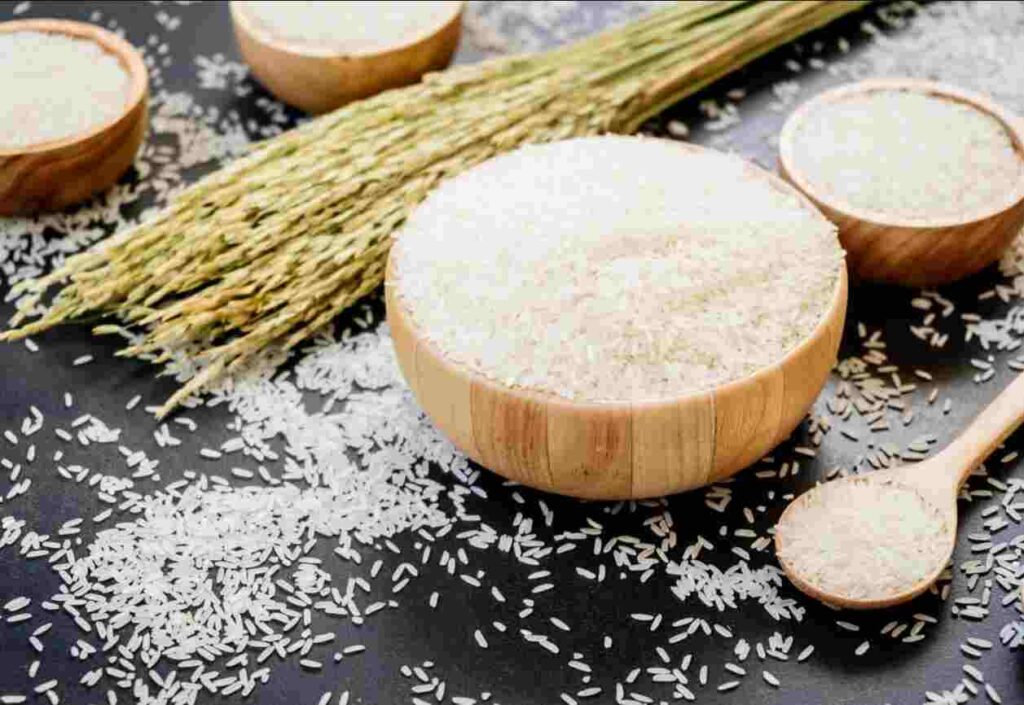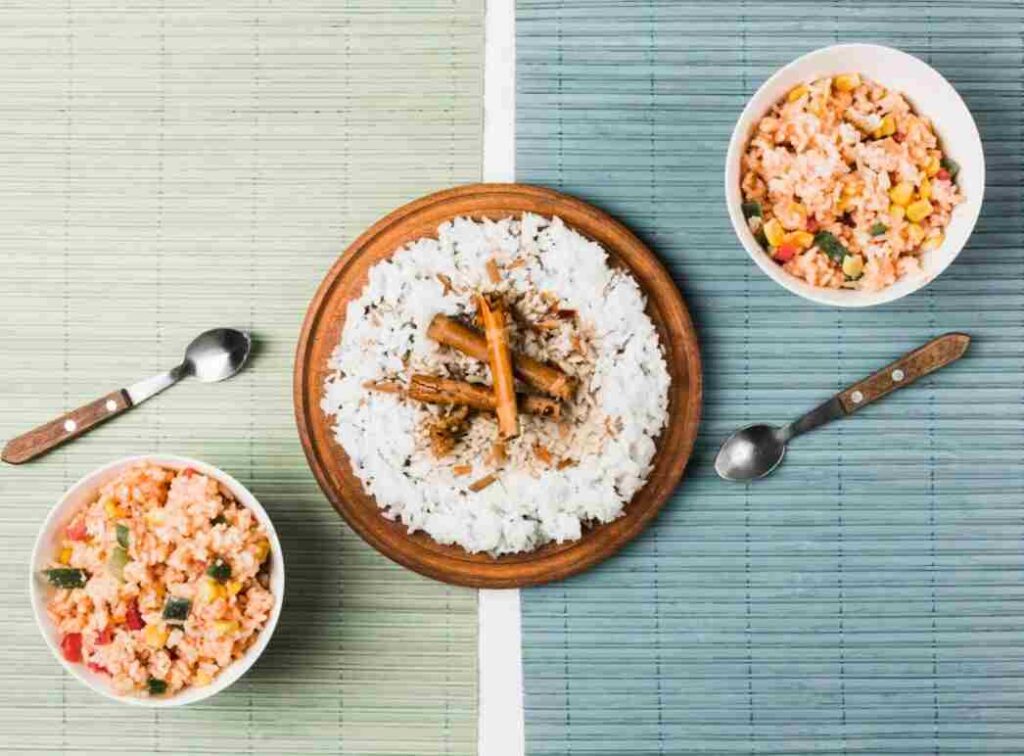Minute Rice has become a staple in many kitchens due to its quick cooking time and convenience. This instant rice product promises a fast and easy solution for busy individuals who want to prepare a meal in minutes.
However, as more people become conscious of the potential health risks associated with processed foods, it’s important to question whether Minute Rice is truly a healthy choice or just another processed food to avoid.
With concerns over nutritional value and the impact of convenience meals on our overall health, it’s crucial to evaluate if Minute Rice can fit into a balanced, nutritious diet.
Is it a practical solution for time-strapped meals, or should it be considered a less healthy alternative to traditional rice options? Let’s dive deeper into the nutritional facts and health implications of Minute Rice.
Nutritional Value of Minute Rice

Minute Rice is a type of instant rice that is precooked and dehydrated to allow for quicker preparation. It’s a convenient option for those with limited time but wanting to add rice to their meals.
However, its nutritional profile differs slightly from traditional rice, such as white rice or brown rice, due to its processing.
Nutritional Breakdown
For 1/4 cup (45g) of dry Minute Rice (approximately one serving)
Calories: 160
Carbohydrates: 36g
Dietary Fiber: 1g
Sugars: 0g
Protein: 3g
Fat: 0g
Saturated Fat: 0g
Sodium: 0mg (varies if seasoning is added)
Iron: 2% of the daily value (DV)
The calories in Minute Rice are primarily from carbohydrates, as rice is a starchy food. While it contains a modest amount of protein, it is relatively low in fat and has minimal fiber compared to whole grain options like brown rice.
Comparing Minute Rice to Other Rice Types
White Rice: Regular white rice typically has a similar calorie count per serving but is lower in fiber and nutrients compared to Minute Rice. A 1/4 cup serving of white rice (uncooked) contains around 150-160 calories, 33g of carbs, and about 0g of fiber, making it slightly less nutrient-dense than Minute Rice.
Brown Rice: Brown rice, being a whole grain, contains more fiber and nutrients, though it’s slightly higher in calories. A 1/4 cup serving of uncooked brown rice provides about 170 calories, 35g of carbs, and 2g of fiber.
The increased fiber content in brown rice helps regulate blood sugar and supports digestion, making it a healthier option overall when compared to Minute Rice.
Serving Size and Portion Variations
The nutritional content of Minute Rice changes depending on the serving size. Typically, the serving size of Minute Rice is around 1/4 cup dry, which will yield about 3/4 cup cooked rice. As the serving size increases, the calories and carbs will increase proportionally. For instance:
1/2 cup dry (90g) of Minute Rice
Calories: 320
Carbohydrates: 72g
Protein: 6g
Fat: 0g
Fiber: 2g
It’s important to note that larger portions, like 1/2 cup of dry rice, may significantly impact calorie intake, especially in a meal where rice is the primary carb source.
Additionally, Minute Rice, being a processed food, has a higher glycemic index than brown rice, meaning it can cause quicker spikes in blood sugar levels, which may not be ideal for people managing their blood sugar or those on a low-carb diet.
While Minute Rice offers convenience, its nutritional value may not compare as favorably with whole grain options like brown rice. However, it still provides a good source of carbohydrates and protein, and can fit into a balanced diet depending on your needs.
Is Minute Rice Healthy?

Minute Rice, a popular instant rice option, provides a convenient, time-saving solution for busy individuals. While it can be a part of a healthy diet, there are several factors to consider when evaluating whether it’s a truly healthy food choice.
Let’s break down the pros and cons of Minute Rice and address potential health concerns related to its consumption.
Pros of Minute Rice
Quick Preparation: One of the most significant advantages of Minute Rice is its speed. Unlike traditional rice, which takes 15-20 minutes to cook, Minute Rice is precooked and dehydrated, allowing it to be prepared in just 5 minutes. This convenience makes it an ideal choice for those with a tight schedule who still want to include rice in their meals.
Affordable and Accessible: Minute Rice is widely available and typically more affordable than other rice varieties, making it an economical option for individuals or families on a budget. It can be easily found in most grocery stores, adding to its accessibility.
Low Fat: Like most rice, Minute Rice is naturally low in fat and contains no saturated fat. This makes it a relatively heart-healthy option when paired with lean proteins and vegetables.
Portion Control: Due to its precise cooking and packaging, Minute Rice allows for easy portion control. It helps prevent overeating, which can be particularly useful for those watching their calorie intake or managing their weight.
Cons of Minute Rice
Higher Glycemic Index: One of the major health drawbacks of Minute Rice is its higher glycemic index (GI) compared to traditional rice, especially brown rice. The glycemic index measures how quickly a carbohydrate raises blood sugar levels.
Foods with a high GI cause rapid spikes in blood sugar, which may be a concern for people with diabetes or those trying to manage blood sugar levels. Minute Rice, being processed, is digested more quickly than whole-grain rice, leading to a faster glucose spike.
Studies suggest that high-GI foods can contribute to insulin resistance over time, increasing the risk of developing type 2 diabetes and other metabolic disorders.
This means that while Minute Rice is convenient, it may not be the best choice for individuals managing blood sugar levels.
Lower Fiber Content: Minute Rice is typically made from refined white rice, which has had the bran and germ removed during processing.
This results in a significant loss of fiber, which is essential for digestive health. Fiber helps regulate bowel movements, promotes a feeling of fullness, and aids in weight management.
In comparison, brown rice, which is less processed, retains its fiber content and provides more nutrients. A higher fiber diet has been associated with lower cholesterol levels, improved gut health, and a reduced risk of chronic diseases like heart disease.
Possible Preservatives: While Minute Rice itself doesn’t contain a large number of artificial additives, it may contain preservatives to extend shelf life. Some individuals prefer to avoid processed foods with preservatives, as there is ongoing debate over the long-term effects of consuming certain chemicals.
Potential for Overconsumption: Because Minute Rice is quick and easy to prepare, it might encourage overeating.
It’s easy to cook large portions, and the lack of fiber may lead to less satiety after eating, prompting individuals to consume larger quantities than needed, which could hinder weight loss efforts.
Health Concerns
Blood Sugar Spikes: As mentioned earlier, the higher glycemic index of Minute Rice can cause rapid blood sugar spikes.
While this might not be a problem for individuals without blood sugar issues, those managing diabetes or attempting to lose weight should be cautious.
Foods that trigger sharp increases in blood glucose can lead to energy crashes, increased hunger, and long-term metabolic issues.
Weight Loss: Minute Rice is not inherently a weight loss-friendly food. While it is low in fat and calories, the lack of fiber and the faster digestion process may lead to overeating.
When trying to lose weight, it is better to prioritize whole grains like brown rice, quinoa, or barley, which provide more nutrients and fiber, helping to keep you fuller longer and regulate appetite.
Expert Opinions and Studies
Experts generally agree that while Minute Rice can be part of a balanced diet, it should not be the primary carbohydrate source for individuals concerned with long-term health.
According to nutritionists, whole grains such as brown rice or quinoa are preferable to refined instant rice because they offer greater nutritional benefits, including higher fiber, vitamins, and minerals.
A study published in The American Journal of Clinical Nutrition found that people who consumed lower glycemic index foods, including whole grains, were at a reduced risk of developing type 2 diabetes.
Additionally, research from the Harvard T.H. Chan School of Public Health emphasized the importance of fiber in reducing the risk of heart disease, stroke, and type 2 diabetes.
While Minute Rice is convenient and low in fat, its higher glycemic index, lower fiber content, and potential additives make it less ideal than whole grains like brown rice or quinoa.
If you have concerns about blood sugar management or are trying to maintain a healthy weight, it might be worth considering other, more nutrient-dense rice alternatives.
Minute Rice vs Regular Rice

When deciding between Minute Rice and traditional rice, it’s essential to consider factors such as cooking time, nutritional content, and overall health impact.
Both options have their advantages, but there are notable differences to keep in mind, especially in terms of glycemic index, fiber content, and nutritional value.
Cooking Time
One of the most significant advantages of Minute Rice is its convenience. Minute Rice is pre-cooked and dehydrated, so it requires only about 5 minutes to prepare.
This makes it an ideal option for busy individuals who need a quick meal without sacrificing the inclusion of rice.
Traditional rice, on the other hand, takes much longer to cook—typically 15-20 minutes for white rice and up to 45 minutes for brown rice. While the longer cooking time of regular rice might be seen as a disadvantage, it is a trade-off for greater nutritional benefits.
Nutritional Differences
In terms of basic macronutrients, Minute Rice and regular rice are similar, but there are important distinctions:
Calories: Both Minute Rice and regular rice provide a similar calorie count per serving, generally around 160 calories per 1/4 cup of uncooked rice.
Carbohydrates: The carbohydrate content in Minute Rice is roughly the same as that in regular white rice, at about 36g per serving. However, traditional rice, especially brown rice, offers more fiber.
Fiber: One of the main differences between Minute Rice and traditional rice is fiber content. Minute Rice, being processed and made from refined white rice, is much lower in fiber.
A serving of Minute Rice contains only about 1g of fiber, whereas brown rice contains around 2g of fiber per serving. Fiber is crucial for digestion, helps maintain steady blood sugar levels, and contributes to a feeling of fullness.
Protein: Both types of rice offer a modest amount of protein, but Minute Rice generally has slightly less than regular rice. For example, Minute Rice contains around 3g of protein per serving, while brown rice contains about 4g.
Glycemic Index and Health Impact
The glycemic index (GI) is a measure of how quickly carbohydrates in food raise blood sugar levels. Minute Rice, like most refined grains, has a higher GI compared to regular rice.
This means that it causes a quicker spike in blood glucose. Regular rice, particularly brown rice, has a lower GI, meaning it is digested more slowly and provides a more gradual release of sugar into the bloodstream.
Lower-GI foods are typically better for individuals with diabetes or those trying to control their blood sugar levels.
Brown rice has additional health benefits over white rice (and by extension, Minute Rice). It is a whole grain, meaning it retains its bran and germ, which are rich in nutrients like B vitamins, antioxidants, and minerals like magnesium and zinc.
In contrast, Minute Rice is made from white rice, which has been stripped of its bran and germ during processing, reducing its overall nutritional value.
Health Considerations
Minute Rice: While it’s low in fat and provides a quick, convenient meal, its processing means it is lower in fiber and nutrients than regular rice.
The higher glycemic index can also contribute to faster blood sugar spikes, which might be a concern for those with metabolic conditions like diabetes or those trying to manage their weight.
Regular Rice: Traditional rice, especially brown rice, offers better long-term health benefits. It’s a good source of fiber, supports digestive health, and provides more vitamins and minerals.
The slower digestion of whole grains also helps maintain stable blood sugar levels and supports sustained energy.
Minute Rice is an excellent choice for those needing a fast and affordable meal, but it does not offer the same nutritional profile as traditional rice, particularly brown rice.
While it provides convenience, lower fiber, and a higher glycemic index make it less ideal for those with specific health concerns like diabetes or weight management.
If health benefits are a priority, regular rice—especially brown rice—offers more fiber, vitamins, and minerals, and is better for long-term health.
Alternative Healthy Rice Options
For individuals looking to make healthier choices or diversify their meals, there are several excellent alternatives to traditional rice, such as brown rice, quinoa, and wild rice.
These options provide more nutritional value and health benefits than refined rice varieties like Minute Rice.
1. Brown Rice
Brown rice is a whole grain and one of the healthiest alternatives to white rice. Unlike white rice, brown rice retains the bran and germ, which means it offers higher fiber content, more vitamins (such as B vitamins), and minerals like magnesium and zinc.
The additional fiber in brown rice helps regulate blood sugar, promotes better digestion, and supports heart health by lowering cholesterol levels.
Brown rice also has a lower glycemic index compared to Minute Rice, providing more stable energy and helping to prevent blood sugar spikes.
2. Quinoa
Quinoa is a highly nutritious, gluten-free seed often used as a rice alternative. It’s a complete protein, meaning it contains all nine essential amino acids, making it an excellent choice for vegetarians and those looking to add more plant-based protein to their diet.
Quinoa is also rich in fiber, antioxidants, and essential minerals like iron, magnesium, and potassium. With its high protein and fiber content, quinoa helps support muscle health, improves digestion, and can assist in weight management by increasing satiety.
3. Wild Rice
Wild rice is not technically rice but is a grass seed. It’s rich in protein, fiber, and essential minerals like phosphorus and magnesium.
Wild rice is also lower in calories compared to white rice, making it a great option for weight management. Its nutty flavor and chewy texture make it a popular choice for salads, soups, and side dishes.
Quick-Cooking Alternatives
If convenience is important, there are quicker-cooking options available. Quick-cooking brown rice or instant quinoa can offer a similar preparation time to Minute Rice while providing more fiber and nutrients.
These alternatives strike a balance between health benefits and convenience, offering a faster cooking time without sacrificing nutrition.
Opting for whole grains like brown rice, quinoa, or wild rice provides greater health benefits over instant rice options, helping to improve digestion, stabilize blood sugar, and support long-term health.
How to Incorporate Minute Rice into a Healthy Diet
Minute Rice can be a convenient addition to a healthy diet when used strategically. While it may not offer as many nutrients as whole grains like brown rice, you can still create balanced meals by pairing Minute Rice with nutrient-dense vegetables, lean proteins, and healthy fats.
Here are some tips for incorporating Minute Rice into a well-rounded diet:
1. Stir-Fries
Stir-fries are an excellent way to add variety to your meals while incorporating Minute Rice. Start by sautéing a variety of colorful vegetables—such as bell peppers, broccoli, carrots, and spinach—with lean proteins like chicken, tofu, or shrimp.
Add cooked Minute Rice toward the end, along with a low-sodium soy sauce or sesame oil for flavor. This combination provides fiber from the vegetables, protein from the meat or tofu, and carbohydrates from the rice, creating a balanced, nutrient-packed meal.
2. Casseroles
Minute Rice works wonderfully in casseroles. For example, mix cooked Minute Rice with sautéed onions, garlic, diced tomatoes, and a lean protein like turkey or chicken breast.
Add a variety of vegetables like zucchini, peas, and mushrooms for extra fiber and nutrients. Use a small amount of low-fat cheese or a light cream sauce for flavor without adding excessive calories.
Baking this mixture will allow the flavors to blend and give you a satisfying, one-pan meal that’s both nutritious and easy to prepare.
3. As a Side Dish
Pair Minute Rice with a protein-rich main dish and nutrient-dense vegetables for a simple, balanced meal. For example, serve Minute Rice with grilled salmon, a side of steamed broccoli, and a mixed green salad.
The rice provides energy through carbohydrates, while the salmon offers heart-healthy omega-3 fatty acids and the vegetables provide vitamins, minerals, and fiber.
4. Rice Bowls
Create a healthy rice bowl by topping cooked Minute Rice with grilled chicken, avocado slices, a handful of leafy greens (like kale or spinach), and a drizzle of olive oil or balsamic vinegar.
This will provide healthy fats from the avocado and olive oil, protein from the chicken, and fiber from the greens, making it a nutrient-dense meal.
Incorporating Minute Rice into meals like these helps balance convenience with nutritional value, ensuring you get a variety of essential nutrients while enjoying quick and easy meals.
Conclusion
Minute Rice offers convenience with its quick preparation time and affordability, making it a practical choice for busy individuals.
However, its lower fiber content, higher glycemic index, and reduced nutrient profile compared to whole grains like brown rice or quinoa raise some health concerns.
While it can still be a part of a balanced diet when paired with lean proteins and nutrient-dense vegetables, Minute Rice may not be the best option for those managing blood sugar levels or looking for a more fiber-rich food.
Ultimately, whether Minute Rice is a healthy choice depends on individual dietary needs and lifestyle.
For those seeking faster meals without sacrificing nutrition, pairing Minute Rice with healthy ingredients can make it a reasonable option, but for long-term health, opting for whole grains is generally a better choice.

